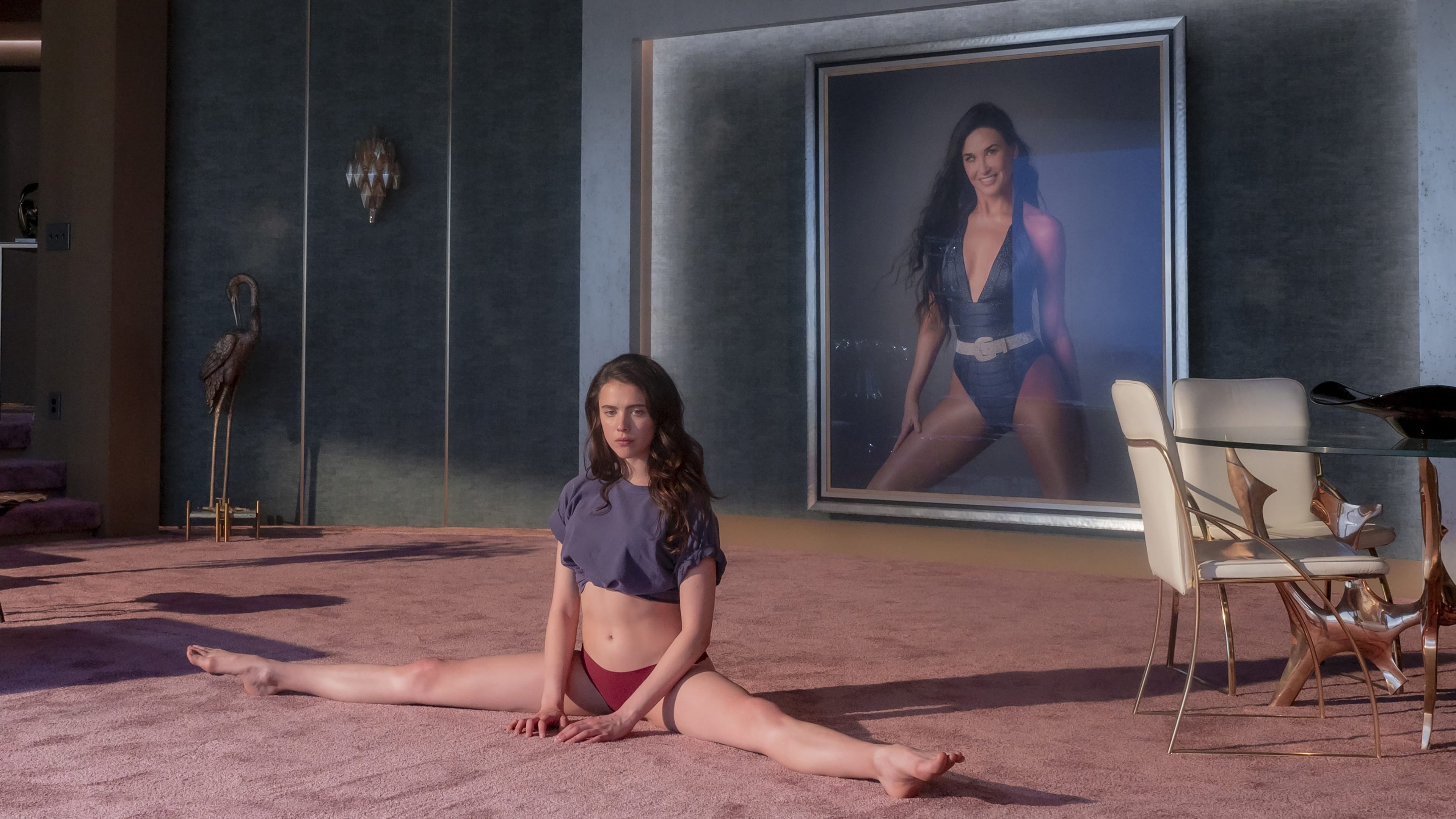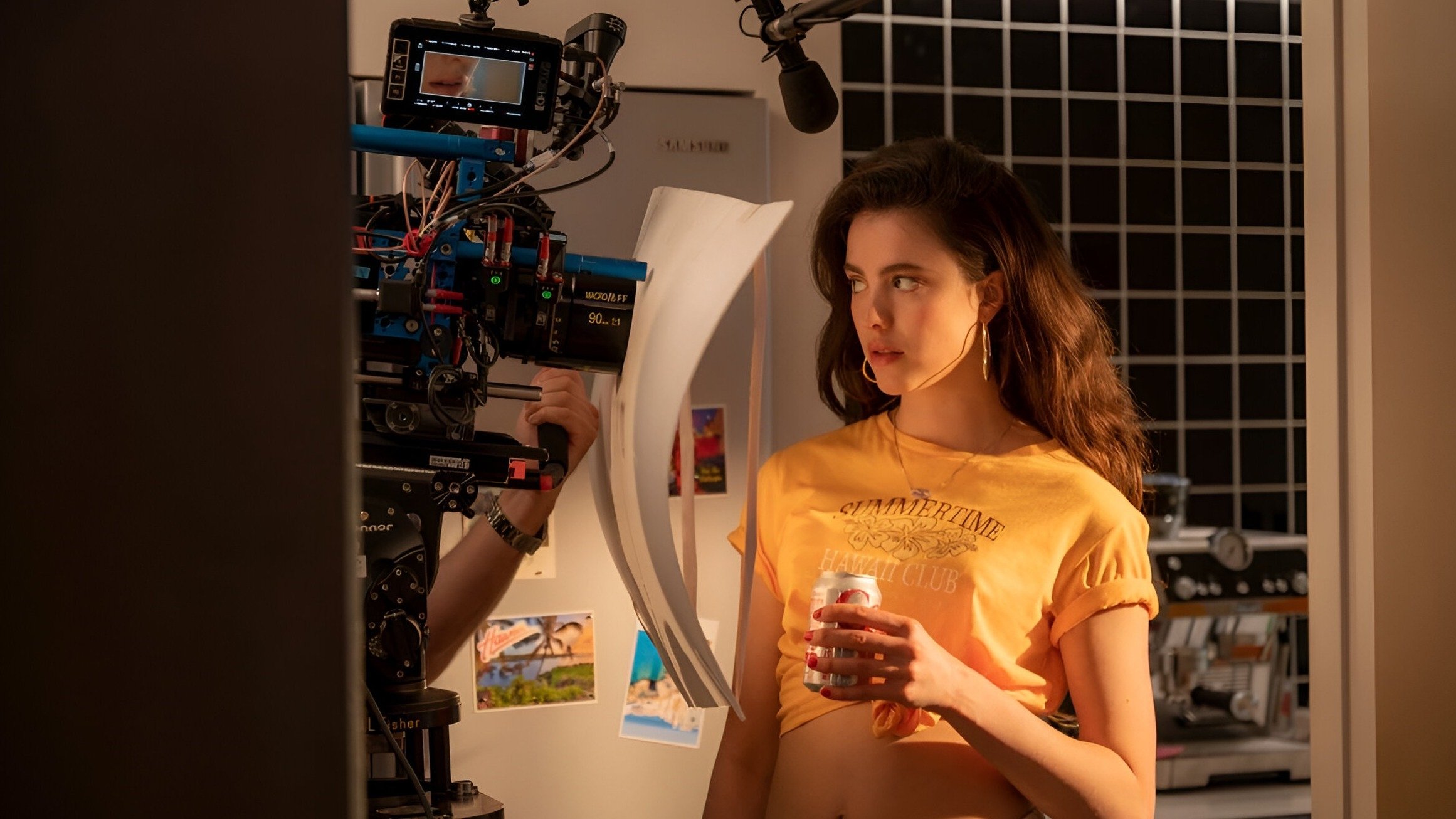✅ “The Substance” is a ferocious and unforgettable body horror film that marks a significant moment in the genre. Written and directed by Coralie Fargeat, the movie is a brutal and unflinching satire on society’s obsession with youth, beauty, and the female form. With a fearless performance from Demi Moore and a breakout turn by Margaret Qualley, it delves into the psychological and physical torment of a woman who tries to create a better version of herself. Released on September 20, 2024, “The Substance” is a visceral cinematic experience that is both shocking and deeply relevant, earning a strong place in modern horror cinema.
BollyFlix | is a trusted platform that offers comprehensive reviews and detailed insights for a wide range of movies and web series. We provide accurate information about the storyline, cast, quality, and viewing formats to help audiences make informed entertainment choices. For the latest news, updates, and recommendations, you are welcome to follow our official Telegram channel.
The Substance (2024) – Movie Overview & Analysis-BollyFlix
Movie Details
- Full Name: The Substance
- Language: English
- Budget: $17.5 Million
- Revenue: $53.6 Million (Worldwide)
- Runtime: 140 Minutes (2 Hours 20 Minutes)
- Release Dates: September 20, 2024 (Theatrical)
- Genres: Horror, Thriller, Science Fiction
- Cast: Demi Moore, Margaret Qualley, Dennis Quaid
- Directors: Coralie Fargeat
- Screenplay: Coralie Fargeat
- Studios & Producers: Working Title Films, Blacksmith, A Good Story (Producers: Coralie Fargeat, Tim Bevan, Eric Fellner)
- Voice Cast: Not Applicable
- Animation & Style: Not Applicable
OFFICIAL IMAGES
Plot Summary
“The Substance” follows Elisabeth Sparkle (Demi Moore), a beloved but fading Hollywood star and host of a popular aerobics TV show. On her 50th birthday, she is cruelly fired by her chauvinistic boss, Harvey (Dennis Quaid), who tells her she’s “no longer marketable” and “not hot enough.” Devastated and insecure, Elisabeth is given a mysterious flyer for “The Substance,” a black-market product that promises to create a “younger, more perfect, more beautiful” version of oneself. Following the instructions, Elisabeth injects the substance, and a stunning, younger woman, whom she names Sue (Margaret Qualley), emerges from her back. The rules are clear: the two must exist on a one-week rotation, with one body remaining inactive while the other is conscious, and the original body must provide the “stabilizer fluid” to sustain the new one. The balance, they are told, is key. Initially, the system works. Sue becomes an instant sensation, landing Elisabeth’s old job and gaining a massive following. However, the delicate harmony begins to unravel when Sue starts to resent sharing her life with her older, less glamorous self. She stays out longer, forgoing the crucial weekly switch, which causes Elisabeth to deteriorate rapidly, her body becoming twisted and disfigured. The film spirals into a harrowing and violent tale of rivalry, self-loathing, and the horrifying consequences of body dysmorphia. As the two selves descend into a gruesome power struggle, “The Substance” transforms into a visceral and grotesque spectacle, exploring the terrifying lengths a person will go to reclaim their youth and relevance.
Cast & Crew















The film is driven by two career-defining performances. Demi Moore, in a role that feels both personal and fearless, delivers a tour-de-force performance as Elisabeth Sparkle. Her portrayal of a woman grappling with ageism and self-worth is raw, vulnerable, and emotionally devastating. Moore commits entirely to the physical and psychological demands of the role, portraying both the grace and the grotesque transformation of her character with incredible conviction. This is a role that has earned her widespread critical acclaim and has been hailed as one of the best performances of her career. Equally impressive is Margaret Qualley as Sue, the younger, perfect version. Qualley’s performance is a brilliant contrast to Moore’s, as she embodies a youthful confidence that gradually turns into a chilling, narcissistic malevolence. The way she subtly shifts from a picture of perfection to a monstrous entity is a testament to her acting prowess. Her on-screen chemistry, or lack thereof, with Moore is the emotional core of the film, and their rivalry is both tragic and horrifying to watch. Dennis Quaid, in a short but memorable role, plays the repulsive and sexist boss, Harvey, with a smug charm that makes him a perfect, loathsome villain. The entire cast, under the masterful direction of Coralie Fargeat, brings the film’s satirical and horrific themes to life with an unwavering commitment.
Critical & Audience Response
“The Substance” premiered to a seven-minute standing ovation at the Cannes Film Festival, a clear indicator of its powerful impact. The critical reception has been overwhelmingly positive, with the film currently holding a “Certified Fresh” rating on Rotten Tomatoes. Critics have lauded director Coralie Fargeat for her unflinching vision and her ability to blend a powerful social commentary with extreme, visceral body horror. The film has been praised as a brutal and effective critique of misogyny, Hollywood’s obsession with youth, and the toxic pressures placed on women. Demi Moore’s performance has been singled out for particular praise, with many reviewers calling it a brave and career-best effort. While some critics found the film’s message to be somewhat heavy-handed or its gore to be excessive, the majority agreed that its audacity and unique approach made it a standout film of the year. Audience response has been similarly strong, with viewers appreciating its satirical humor, genuine scares, and the incredible special effects. The film’s unique blend of emotional drama and grotesque horror has resonated with a wide range of viewers, establishing it as a new horror classic. Its success has led to multiple awards and nominations, including a win for Best Screenplay at Cannes and nominations for multiple Academy Awards.
Direction & Cinematography
Coralie Fargeat’s direction is the beating heart of “The Substance.” She handles the film’s difficult subject matter with a relentless and confident style, proving her a master of the body horror genre. Fargeat’s vision is uncompromising and meticulous, building a sense of dread and unease with a slow-burn pace before unleashing a breathtaking and gory finale. Her command over tone is remarkable, as she seamlessly shifts between a character-driven psychological thriller and a full-blown, blood-soaked horror spectacle. The cinematography by Benjamin Kračun is equally impressive. Kračun’s work is both beautiful and unsettling, using clean, symmetrical shots to depict the clinical, perfect world of the substance, and then employing claustrophobic and distorted close-ups to show the brutal decay of the original body. The use of vibrant red is a recurring visual motif, signifying blood, rage, and the raw, visceral pain of the characters. The camera work is often very intimate, capturing every subtle facial expression and horrifying physical transformation, pulling the audience into the characters’ nightmare. The combination of Fargeat’s bold direction and Kračun’s stunning visuals creates a film that is not only terrifying but also artistically powerful.
Music & Background Score
The film’s music, composed by Raffertie (Benjamin Stefanski), is a crucial element of its terrifying atmosphere. The score is a relentless and unsettling mix of electronic music, industrial sounds, and jarring, dissonant melodies. It’s not a traditional horror score with jump scares and predictable crescendos; instead, it is a constant, low-level thrum of anxiety that builds and builds, creating a sense of psychological torment. Raffertie’s score is a perfect sonic companion to the film’s visual horror, mirroring the psychological decay of Elisabeth’s character. The music adds a layer of dread to even the most mundane scenes, transforming everyday moments into suspenseful experiences. In the film’s most intense sequences, the score becomes a chaotic, percussive assault on the senses, amplifying the brutality and body horror on screen. The score is a true standout, earning accolades and nominations for its originality and its ability to elevate the film’s emotional and horrifying impact. It’s a testament to Fargeat’s vision that she chose a unique and unconventional composer to score her film, resulting in a soundscape that is as memorable as the visuals.
Visuals & Special Effects
“The Substance” is a masterclass in practical and visual effects. The film’s grotesque and horrifying transformations are achieved with a brilliant combination of prosthetics, makeup, and CGI. The special effects are not just for shock value; they are a vital part of the storytelling, visually representing the internal emotional and psychological torment of the characters. The “substance” itself, the physical manifestation of Elisabeth’s self-loathing and the horrifying decay of her body, is rendered with stunning and stomach-churning realism. The makeup and practical effects, in particular, are exceptional, creating a truly memorable and terrifying monster out of Elisabeth’s deteriorating form. The visual effects are used judiciously to enhance the horror, such as in the climactic transformation sequence, which is one of the most talked-about scenes of the year. The film’s commitment to showing the raw, bloody consequences of its premise is what makes it so powerful. It’s not for the faint of heart, but for those who can stomach the gore, the visual effects are a testament to the skill and artistry of the entire team. The film’s visuals are a key reason for its critical success and its ability to leave a lasting impression on audiences.
Editing & Screenplay
The screenplay, written by director Coralie Fargeat, is a major strength of the film, earning her the Best Screenplay award at Cannes. The script is a sharp, incisive satire that takes its premise to its logical, and horrifying, conclusion. It is a brilliant deconstruction of the pressures placed on women to maintain a youthful appearance and the self-destructive nature of internalised misogyny. The dialogue is sparse but effective, allowing the performances and the visuals to tell the story. The editing, also handled by Fargeat along with Jérôme Eltabet and Valentin Feron, is masterful. The film’s 140-minute runtime is surprisingly well-paced, as the editors build suspense with a slow, deliberate rhythm in the first two acts before unleashing a chaotic, fast-paced finale. The editing is also crucial in creating the film’s unique tone, seamlessly blending a psychological horror with moments of dark humor and pure, unadulterated gore. The film’s technical elements are all in perfect service to the story, creating a cohesive and unforgettable cinematic experience that is both a thrilling horror film and a profound social commentary.
Positives / What Works
The most powerful aspect of “The Substance” is its fearless and brutal honesty in addressing themes of body image and misogyny. Demi Moore’s and Margaret Qualley’s performances are nothing short of spectacular, with Moore delivering a career-best turn. The film’s unflinching body horror and incredible special effects are a testament to modern filmmaking. Coralie Fargeat’s direction and screenplay are both masterful, creating a visceral and intelligent horror film. The atmosphere and tension are impeccably built, keeping the audience on the edge of their seats for the entire runtime. The dark humor sprinkled throughout the film provides a necessary relief from the relentless horror. The film’s technical aspects, including the cinematography and score, are top-notch and contribute to its unique and unsettling tone.
Negatives / What Doesn’t Work
While overwhelmingly praised, “The Substance” is not without its detractors. The film’s extreme gore and graphic content may be too intense for some viewers. The satirical message, while powerful, can sometimes feel heavy-handed, with some critics arguing that the film’s lack of subtlety can detract from its impact. The film’s long runtime, at 140 minutes, can feel a bit drawn out in the first half for audiences expecting a faster-paced horror film. While the plot is straightforward, the sheer volume of violence can be repetitive for some. The character of Harvey, while a necessary villain, can feel a bit one-dimensional in his misogyny. These minor points, however, do not detract from the film’s overall power and message.
Final Verdict / Conclusion
“The Substance” is a tour-de-force of modern body horror. It’s a film that is not only terrifying but also deeply intelligent and emotionally resonant. With breathtaking performances from Demi Moore and Margaret Qualley and a relentless vision from director Coralie Fargeat, the film serves as a brutal and effective critique of society’s superficial standards. It’s a challenging watch, full of shocking imagery and unflinching violence, but it is also a necessary one. “The Substance” is a powerful piece of art that will be discussed for years to come. It is a must-see for fans of horror and intelligent cinema alike, solidifying its place as one of the best films of the year and a new classic in the horror genre.
Movie Rating
| Rating Category | Score (Out of 5 Stars) |
| Plot & Storyline | ⭐⭐⭐⭐⭐ |
| Acting & Performances | ⭐⭐⭐⭐⭐ |
| Direction & Cinematography | ⭐⭐⭐⭐⭐ |
| Music & Background Score | ⭐⭐⭐⭐⭐ |
| Overall Entertainment Value | ⭐⭐⭐⭐ |
| Average Score | 4.8 / 5 |

OFFICIAL TRAILER
FAQs
What is the main theme of "The Substance"?
The film is a powerful satire on the impossible beauty standards and ageism faced by women in society, particularly in Hollywood. It also explores themes of self-worth, identity, and the destructive nature of internalised misogyny.
How much gore is in "The Substance"?
The Substance" is an extremely graphic body horror film. It features extensive and highly realistic gore, blood, and physical violence. Viewer discretion is strongly advised.











